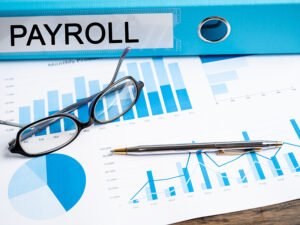Do You Know How SECURE 2.0 Will Affect Your Manufacturing Company?
Kirsch CPA Group
Mar 16, 2023

The SECURE 2.0 Act, enacted at the end of 2022, expands on the retirement plan improvements made by the Setting Every Community Up for Retirement Enhancement Act of 2019 (the SECURE Act). In general, SECURE 2.0 gives employees the opportunity to save more and save longer for retirement, at a lower tax cost.
In some cases, the new law imposes additional requirements on manufacturers (and other employers) that may add to the cost of providing a 401(k) plan or other defined contribution plan. Other provisions are optional. But both the required and optional provisions can help you use your company’s retirement plan to retain and attract quality employees in light of the current tight labor market. And if you’re a smaller manufacturer without a 401(k) plan in place yet, you may be eligible for a tax break that has become even more valuable.
New Requirements
Here are two significant requirements that will go into effect after 2024:
Automatic enrollment. For new 401(k) plans adopted after 2024, generally, the plan must provide automatic enrollment to eligible employees. Employees could still opt out. If an employee doesn’t opt out, employee deferrals ranging from 3% to 10% will be made, subject to escalation provisions.
Part-time workers. Building on changes in the first SECURE Act, the new law requires companies to include more part-time employees in their 401(k) plans. Effective for plan years beginning after 2024, part-timers are eligible to contribute if they’ve completed at least 500 hours of service for two consecutive years (and are at least age 21), down from three years of service. Vesting is based on completion of 500 hours of service in a year.
Optional Enhancements
Here are some optional ways SECURE 2.0 allows you to enhance your company’s 401(k) plan:
Matching employer contributions. SECURE 2.0 allows companies to designate any matching contributions, as well as fully vested employer nonelective contributions, as after-tax contributions to a Roth account. This provision is now in effect. With a Roth account, future distributions made to retired employees are generally exempt from federal income tax. This can be attractive to employees with incomes that are too high for them to be eligible to contribute to Roth IRAs or who are concerned about owing income tax on distributions during retirement.
Student loan repayments. Under the new law, manufacturers may choose to provide a matching contribution to 401(k) accounts of their employees based on their student loan obligations. This provision takes effect in 2024. Thus, employees may be encouraged to save for retirement even while they’re still paying off their student loans. This is a low-cost incentive that manufacturers can use to help attract and retain employees who may be burdened with student loan debt.
Emergency withdrawals. For distributions made after 2023, a manufacturer can amend its 401(k) plan to allow participants to withdraw up to $1,000 for personal emergency expenses. These are unforeseeable or immediate financial needs relating to necessary personal or family emergency expenses. The plan administrator may rely on the employee’s certification for this purpose.
A Valuable Credit
Under the first SECURE Act, a manufacturer with 100 or fewer employees could claim a credit for three years equal to 50% of the administrative costs of starting a 401(k) plan, up to a maximum of $5,000. Beginning in 2023, companies with 50 or fewer employees can now qualify for a credit equal to 100% of the costs, up to $5,000.
The 100% credit is phased out for a business with 51 to 100 employees. An additional credit of up to $1,000 per employee is available for employer contributions for employees earning less than $100,000.
Other Enhancements
Here are two more provisions manufacturers should be aware of:
Cash-out limit. If a plan participant is terminated from employment — whether he or she retired, quit or was fired — a manufacturer may “cash out” the ex-employee’s interest if it’s below a specified level. Previously, the limit was $5,000. SECURE 2.0 increases the cash-out limit to $7,000, beginning in 2024.
Catch-up contributions. Currently, 401(k) participants who are age 50 or older can make an extra “catch-up contribution,” subject to an annual limit ($7,500 in 2023). Beginning in 2025, SECURE 2.0 increases the limit for those age 60 through 63 to the greater of $10,000 or 150% of the regular catch-up contribution limit, indexed for inflation after 2025. One catch: For any participant with wages in the prior year exceeding $145,000, any age-based catch-up contributions must be made to a Roth account, beginning in 2024.
Learn More
Bear in mind that this is only an overview of key changes that may apply to your manufacturing company’s 401(k) plan. Other provisions may affect your company. If you have questions regarding the new law, please contact Kirsch CPA Group.
We can help you tackle business challenges like these – schedule an appointment today.
© Copyright 2023. All rights reserved.
More Resources

About The Author
Kirsch CPA Group is a full service CPA and business advisory firm helping businesses and organizations with accounting,…





